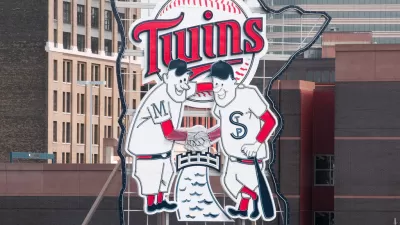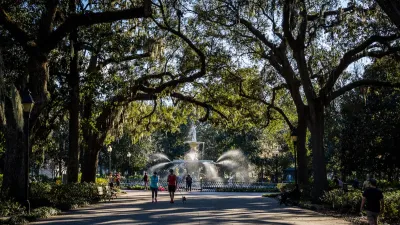A new tool comparing cities in the U.S. and Canada tracks improvements in the way cities are greening, and also highlights areas where improvement is needed.
"The U.S. and Canada Green Cities Index took 27 cities and scored them on CO2, energy, land use, buildings, transport, water, waste, air and environmental governance. A report accompanying the rankings looked at individual policies and factors that helped shape the cities' scores.
On the top line, the results aren't shocking. San Francisco led the list, followed by Vancouver, New York City, Seattle and Denver. The cities with the lowest rankings were mostly in the old rust belt. The bottom five were Pittsburgh, Phoenix, Cleveland, St. Louis and (in dead last) Detroit. The full list follows the gallery, which shows the cities in alphabetical order. The graphics illustrate the components of the city's overall performance."
The graphics -- included in this post from The Atlantic -- show how each city performs and compares that to the average of all 27 cities and the best performing city.
FULL STORY: The Good, the Bad and the Ugly of Greening Cities

Study: Maui’s Plan to Convert Vacation Rentals to Long-Term Housing Could Cause Nearly $1 Billion Economic Loss
The plan would reduce visitor accommodation by 25,% resulting in 1,900 jobs lost.

North Texas Transit Leaders Tout Benefits of TOD for Growing Region
At a summit focused on transit-oriented development, policymakers discussed how North Texas’ expanded light rail system can serve as a tool for economic growth.

Why Should We Subsidize Public Transportation?
Many public transit agencies face financial stress due to rising costs, declining fare revenue, and declining subsidies. Transit advocates must provide a strong business case for increasing public transit funding.

How to Make US Trains Faster
Changes to boarding platforms and a switch to electric trains could improve U.S. passenger rail service without the added cost of high-speed rail.

Columbia’s Revitalized ‘Loop’ Is a Hub for Local Entrepreneurs
A focus on small businesses is helping a commercial corridor in Columbia, Missouri thrive.

Invasive Insect Threatens Minnesota’s Ash Forests
The Emerald Ash Borer is a rapidly spreading invasive pest threatening Minnesota’s ash trees, and homeowners are encouraged to plant diverse replacement species, avoid moving ash firewood, and monitor for signs of infestation.
Urban Design for Planners 1: Software Tools
This six-course series explores essential urban design concepts using open source software and equips planners with the tools they need to participate fully in the urban design process.
Planning for Universal Design
Learn the tools for implementing Universal Design in planning regulations.
Ascent Environmental
Borough of Carlisle
Institute for Housing and Urban Development Studies (IHS)
City of Grandview
Harvard GSD Executive Education
Toledo-Lucas County Plan Commissions
Salt Lake City
NYU Wagner Graduate School of Public Service




























